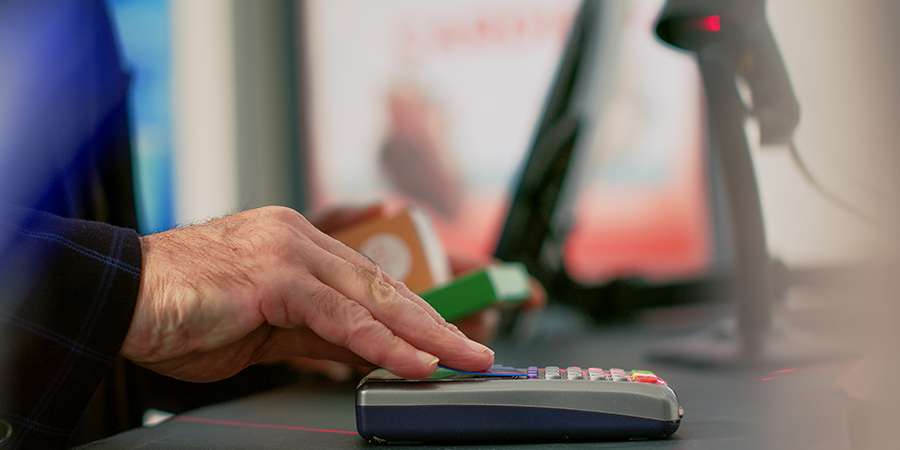Internet Connection Completed Verification of Central Bank Standard Barcode Interconnection Technology
Source: Daily Economic News
Recently, Wanglian announced the completion of the People's Bank of China's standard barcode interconnection and intercommunication verification for "payment scanning" (C2B) involving multiple institutions. This marks the basic completion of the People's Bank of China's barcode interconnection and intercommunication technology verification work. Recently, the Industrial and Commercial Bank of China (hereinafter referred to as ICBC) announced that it has cooperated with China UnionPay and Alipay to be the first commercial bank to achieve mutual recognition and scanning of QR codes with Alipay. On January 13th, Bank of China also announced its cooperation with China UnionPay and Tenpay to become the first bank to enable mobile banking to scan WeChat "face-to-face QR codes" for payment, making it the first bank to achieve mutual recognition and scanning with WeChat.
Multiple banks have already achieved barcode payment interconnection and intercommunication with payment institutions, and the barcode payment market is moving towards a more secure, standardized, and efficient direction, ushering in an era of universal compatibility.
Multiple banks and payment institutions have achieved barcode payment interconnection and intercommunication.
Recently, Wanglian announced the completion of interconnection and intercommunication of the People's Bank of China's standard barcodes for "payment scanning" involving multiple institutions.
As early as before the Spring Festival in 2020, the People's Bank of China's standard barcode interconnection and intercommunication, led by Wanglian, had successfully completed the "payment scanning" field verification in three pilot cities: Ningbo, Hangzhou, and Chengdu. Ping An Pay, Modern Gold Control, and Tonglian achieved mutual scanning and recognition for "payment scanning" transactions.
Analysts in the industry have noted that with the successive integration of "payment scanning" and "payment scanning" scenarios, Wanglian's barcode interconnection and intercommunication, as a standardized entry point for the central bank, has the capability to cover all offline barcode payment scenarios. It can support cross-recognition and scanning between different wallet accounts and different acquiring institutions in various scenarios.
ICBC also recently announced its cooperation with China UnionPay and Alipay to be the first commercial bank to enable ICBC eLife to be the main scanning payment method with Alipay, becoming the first commercial bank to achieve mutual recognition and scanning with Alipay.
On January 13th, Bank of China also announced its cooperation with China UnionPay and Tenpay to enable mobile banking to scan WeChat "face-to-face QR codes" for payment, becoming the first bank to achieve mutual recognition and scanning with WeChat. On the same day, Bank of Communications announced its cooperation with China UnionPay and Tenpay to enable Bank of Communications' mobile banking to scan WeChat payment codes. The first batch of pilot cities included Fuzhou, Ningbo, Jinan, and others, with more cities to follow.
This indicates that multiple banks have already achieved barcode payment interconnection and intercommunication with payment institutions, and the barcode payment market is moving towards a more secure, standardized, and efficient direction.
Regulation actively promotes barcode interconnection and intercommunication.
It is reported that two state-owned banks and a leading payment institution have already carried out technical integration with Wanglian, and the online work has been put on the agenda. The completion of the People's Bank of China's standard barcode interconnection and intercommunication technology verification by Wanglian marks the acceleration of interconnection and intercommunication. With the successive entry of various market participants, the infinite value and growth space of barcode payments will be unleashed.
In fact, as early as 2017, China UnionPay, together with more than 40 commercial banks, officially launched the UnionPay standard QR code product, ushering in the era of QR code payment interconnection and intercommunication.
These actions are taking place against the backdrop of the increasing popularity of smartphones and changes in user payment habits in recent years. According to a previous survey report on mobile payment users published by the China Payment and Clearing Association in 2019, barcode payment is the most commonly used mobile payment method for users. The use of flash payment products has significantly increased compared to the previous year, and fingerprint and facial recognition technology has been accepted by most users.
Information shows that regulators are also actively promoting barcode interconnection and intercommunication. The "FinTech Development Plan (2019-2021)" issued by the central bank proposes to increase the technological empowerment of payment services, promote barcode payment interconnection and intercommunication, study and formulate technical standards for barcode payment interconnection and intercommunication, unify barcode payment encoding rules, build a technical system for barcode payment interconnection and intercommunication, break down barriers to barcode payment services, and achieve mutual recognition and scanning of barcode identifiers for different apps and merchants.
Daily Economic News





